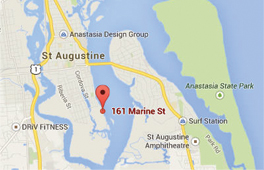BayView Healthcare and Caregiving from a Distance
When Mom and Dad live in another city or state and have a change in their health, the challenges to caregiving can seem overwhelming. Fortunately, there are strategies and tips that long-distance caregivers can use to help.
Learn more about taking care of aging parents from a distance.
Caregiving from a Distance
“I don’t think many adult children think much about what to do when our parents can’t live alone any more until we are faced with the need to move them into a place that is secure and safe,” says Dana H., a member of the A Place for Mom community.
For family members whose loved ones live far away, caregiving decisions pose an extra challenge, from additional time and stress to financial worries. “Living out of state only compounded the logistics and shortened the time frame in which to deal with my father’s relocation,” says Sharon B.
In other words, if you live in a different city or state from your aging parents, you may not be on hand to address any sudden changes in their health or day-to-day needs. Whether it’s simply gathering information about your loved one’s care needs, or coordinating senior living and medical services, caregiving from a distance involves a substantial investment of resources.
Long-Distance Caregiving in the U.S.
According to a MetLife/National Alliance for Caregiving report, it’s estimated that about 34 million Americans are caregivers for an older parent — and of that number, 15% live one or more hours away from the care recipient. Nearly one third of adults providing care at a distance are helping someone with Alzheimer’s disease or dementia, reports a 2004 MetLife study. A fourth of long-distance caregivers also reported that they were the primary or only caregiver; however, in many cases a sibling or other relative provided help. Why this surge in long-distance caregiving?
There are a number of contributing factors, but what it boils down to is an overall increase in our society’s mobility — and it’s not just students moving across the country for university or working adults moving to take on a new position or career.
Even seniors 65 and older are increasingly mobile, reports MetLife:
The number of seniors who have switched states over the last decade has increased 65%.
When those seniors experience a change in being able to care for themselves, it’s often up to the adult children living some distance away to coordinate senior care.
The Challenges of Taking Care of Aging Parents from a Distance
Researching and coordinating senior care is a challenge even at the best of times, but when you add in the factor of distance, there are additional issues that may crop up.
Some challenges include:
- Deciding on a primary caregiver. Determining who is the main caregiver in the first place can be a trial if siblings or other immediate family cannot agree on individual roles, especially if time is of the essence. “Everything happened so quickly and we were very pressed for time due to my siblings going back to their homes out of state,” says Janel G. If you are the primary caregiver, then you’ll be the one faced with much of the research and decision-making, regardless of how far away you live.
- Juggling family and career demands. A large proportion of long-distance caregivers are “sandwich caregivers,” supporting families of their own while also caring for aging parents at a distance. Also, “research has shown that employed caregivers often are required to make significant adjustments to their work in order to accommodate their caregiving responsibilities,” from missing work days to rearranging schedules (MetLife/National Alliance for Caregiving).
- Handling new sources of financial strain. Long-distance caregivers reported spending $193 per month out-of-pocket on average on their loved ones — from medications to home upkeep — and $199 per month in travel and phone expenses, reported the MetLife study.
- Assessing care needs and finding resources at a distance. It can be difficult to determine when your parent needs you, especially if they are unable or unwilling to communicate their needs. Researching resources and senior care local to your loved one can be one of the biggest challenges. “The choices for assisted living are plentiful but overwhelming in the number, variety and locations,” says Dana Holstine.
Long-Distance Caregiving Tips
Fortunately, there are strategies long-distance caregivers can follow to make the process easier. You can — and should — schedule family meetings to discuss decisions ahead of time, organize important documents and paperwork before you need them, and gather all necessary contact information for concerned parties, including friends, family, neighbors and care providers. “Advance preparation is not usually our best suit, so we find ourselves scrambling to keep everyone happy,” Dana Holstine says. Having as much in place as possible ahead of time will make things go much more smoothly in the event your loved one’s situation changes.
In particular, seeking help from knowledgeable parties can be invaluable if you face the situation of looking for senior care at a distance: community organizations in the area where your parent lives; online resources like the Eldercare Locator; groups like the local area Council on Aging; professionals like elder law attorneys; and senior care referral services like A Place for Mom. Any and all of these can help you determine what kind of senior care will best fit your loved one’s needs and budget.
“A Place For Mom helped me narrow the choices by focusing on the specific area we wanted to relocate my husband’s 87-year-old aunt last summer,” Dana told us. “I felt comfortable using their advice as a starting point and quickly found a perfect place for her near to us.” Don’t be afraid to ask for help, she says, because help is out there.








